(Español) El artista chileno con base en Barcelona José Caerols “Yisa” trabaja sobre los conceptos de identidad y migración, destacando materiales y elementos que puedan configurar este modelo de pensamiento. Estando en España sus conceptos y propuestas conceptuales han cambiado desde la materialidad, y donde la migración ha dado una vuelta hacia su propia persona. Conversamos con él acerca de estos procesos y nuevas piezas y con los directores de Mario Kreuzberg Gallery en Berlín, donde tuvo lugar la última exhibición del artista.
By Carolina Martínez | Images courtesy the artist and Mario Kreuzberg Gallery Berlin
Carolina Martínez: Since when are you researching what led you to your latest works, showed in “Anexo Metropolitano” (Metropolitan Annex) at Mario Kreuzberg Gallery in Berlin?
José Caerols: Today, I believe that a real research process has a holistic character that covers a significant part of the time in the development of any artist, so I understand the work showed at Mario Kreuzberg Gallery as the result of a research process that has led by a latent complexity of ideas such as identity, migration and territory, and the capacity of these ones to define affective, social and political constructions. This production is presented as the result of two phases: the first one is the process developed in Santiago, Chile, where remarkable pieces are “Gilligan” (Galería Tajamar, 2013); “Monument Lampedusa” (2014); “El Robo de Hispanoamérica” (Museum of Contemporary Art of Chile, 2015) and “Malinche” (Sagrada Mercancía, 2016). They bring out the idea of Latin American identity and migration as thematics of production. And as a second stage, I must clearly recognize my staying in Barcelona (city where I am currently based), where through a work in local residencies, I was able to redefine or affirm proposals previously proposed, which face different socio-political realities, where the “I” appears as immigrant, or the social and territorial crises together with their readings, understanding these new evaluations of concepts as searches for more universal semiotic relationships.
CM: Since some years ago you are based in Europe, in Barcelona. How has the choice of materials and objectivity changed on the work that you started in Chile? How have the themes changed?
JC: As I explained before, I do not think that “the” thematic has changed, but I understand this new place of opinion as a projection of continuous and constant development in relation to a type of research and production.
On the other hand, the materials have been an issue. First because many times there are no basic materials with which you have worked always, or its price is much higher, becoming a clear problem for the production. Besides, the fact of being local, intrinsically brings with an own conception of the materials of the place, how to get them, etc. A good example of this, is “El Robo de Hispanoamérica” installation, where I installed 6 tons of corn kernels inside the Museum of Contemporary Art: a project of this size would be impossible for me now in Barcelona, because corn as an element does not have a local relationship as America does, and later because for this project I was inspired by many knowledge in relation to corn that came from my family (my father sows and sells corn seeds).
So these reasons, consciously or unconsciously, lead the production and selection of elements for the pieces, taking them to another place at a formal level, I do not know to say if in a discursive level.
In relation to the objectuality that I have addressed in my production, I cannot deny that it has become stronger in last years, but it has been a slow process that started in Barcelona, if not in Chile. In particular with a piece made for the Museum of Contemporary Art also, in 2011, where I introduced 2 tons of river boulders.
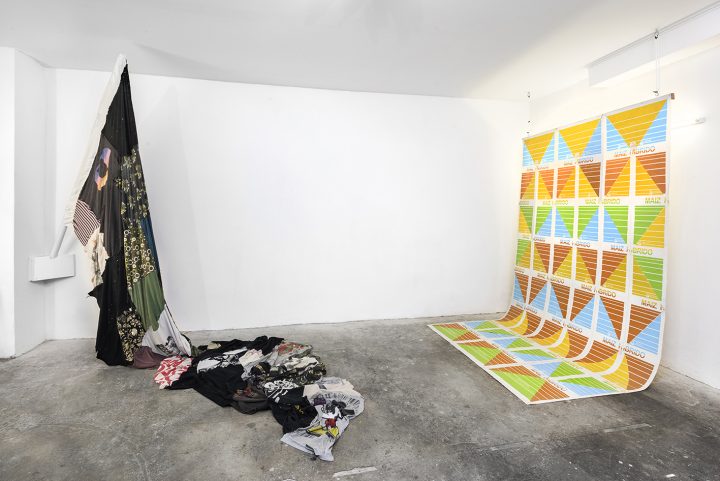
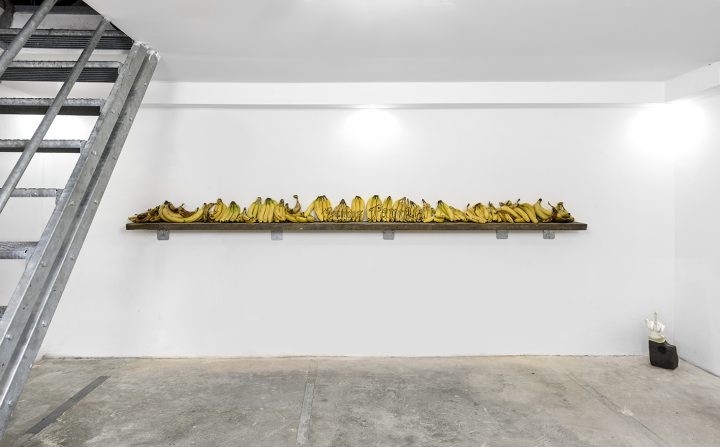
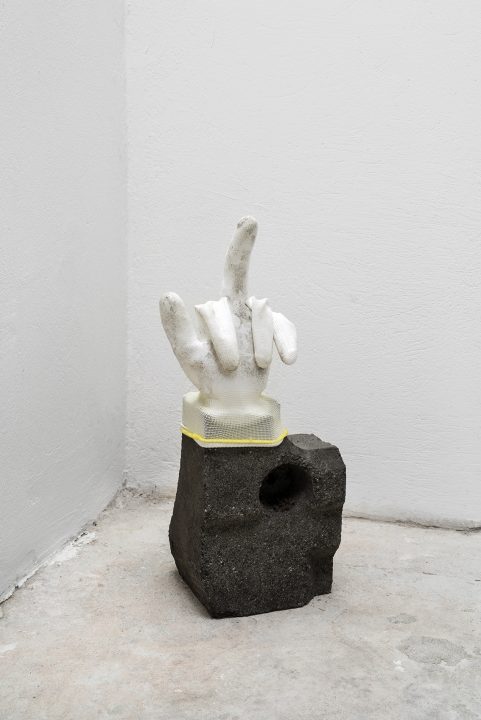
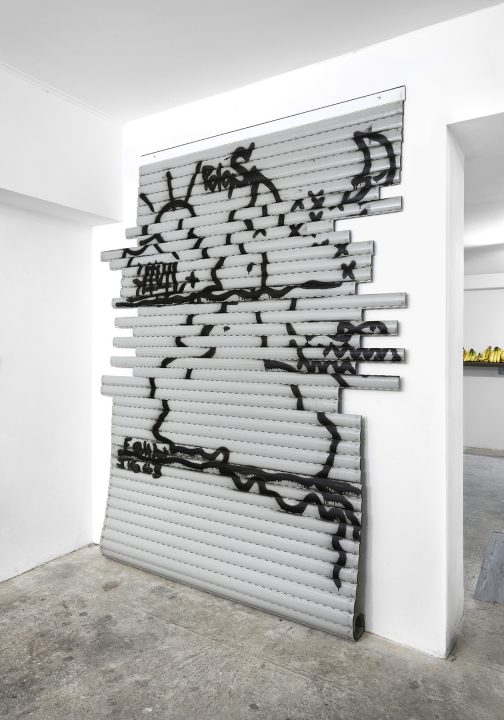
CM: I know that one of your key points in your work has been the hybridization between the hegemonic world and the periphery, the colonizers and the colonized, and from there to the mix with the current processes of migration. Tell us about your perception now that you have been staying, studying and creating in what would be this mainstream. Is decolonization still the axis?
JC: Yes. colonization and decolonization are the base of my work, as well as identity and migration, understanding my current position, both geographically and conceptually, that talking as an addition is able to add more layers to this kind of discussions. As it is easy to notice in my work, I am a declared fan of Joaquín Torres García, Uruguayan artist who developed and made a great part of his production resulting in “The School of the South”, being here in Barcelona.
Small coincidences that make sense or at least ask questions. I could also talk about the Catalan process of independence and the needing to increase or eliminate borders, at the same time we raise the representative rights of a people and the subjugation of minorities in relation to bigger, military and economic powers.
From what I understand as a world where I see borders and nationalisms increasingly unnecessary, a notorious possibility is the fact of being able to live far away from my country and continent for a while, understanding this as a special moment of reflection and new visions.
CM: There is something more industrial, something more urban in the pieces of “Anexo Metropolitano” (Metropolitan Annex). What is the social and power dialectic that you see in these cities (Berlin and Barcelona) that have led you to this place?
JC: The dialectic that I understand is affirmed in “Anexo Metropolitano” (Metropolitan Annex), has a direct relationship with the city as a place of discourse, counter-discourse or and existence. The exhibition, which for the most part was conceived in Berlin, explores the validation and production of local elements as a discursive form from which we can put questions such as identity and hyper capital production as a feature of this or a systematic consequence that defines it.
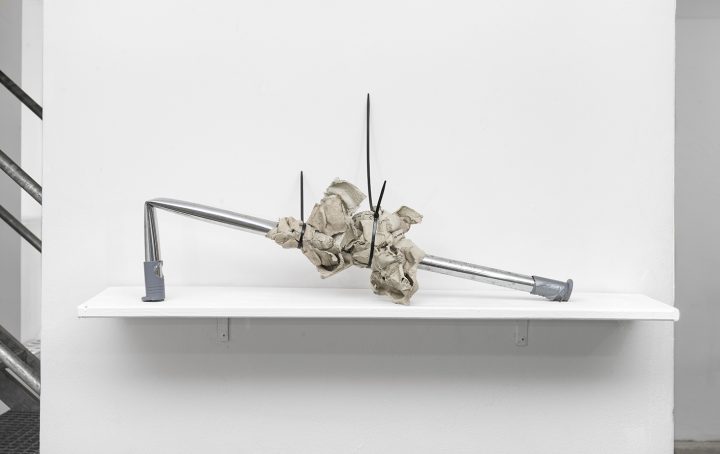
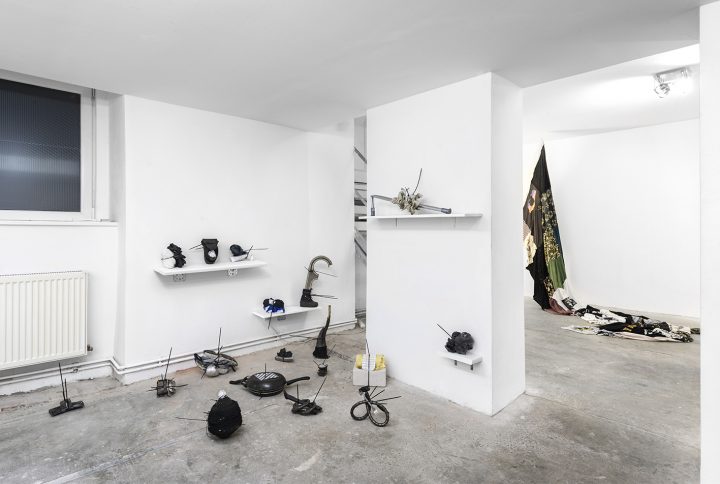
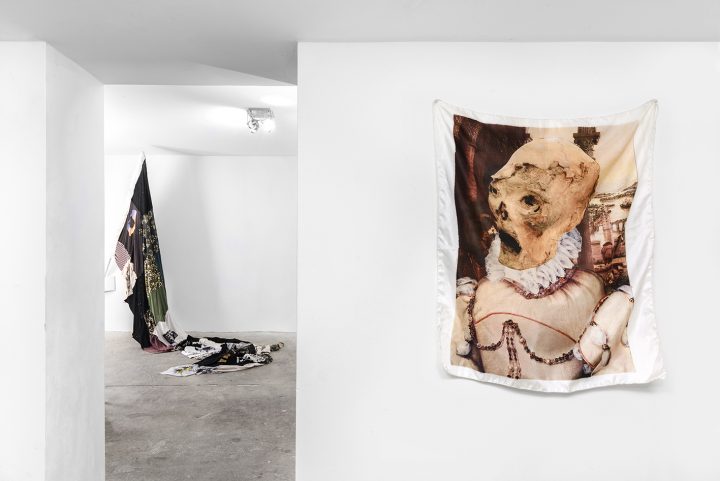
CM: What is that “annexed” part to the city that you are looking to unveil with this latest show?
JC: We “ALL”, who basically do not understand this system, where the capital surpasses the importance of humanity and compassion. I believe that we are the proper annex of this city.
CM: What are you doing today after having already digested all this exhibition and its pieces? What topics and concerns (yes, in the sense of concern) keep you busy?
JC: I just made some specific-site pieces for an installation festival held in Barcelona, so I came to work directly with this new proposal. On the other hand, I am involved in the realization of some publications; one with an investigative tone that has the theme “Art in the public space of Chile as a generator of historical memory”, and another one is in relation to my aesthetic-plastic research. And for this 2019 I am with a very big interest in re-developing a series of paintings that will be developed around the idea of social constructions in relation to the representative quality of an idea or symbol, having as a starting point the story of Jemmy Button and the indigenous hunting.
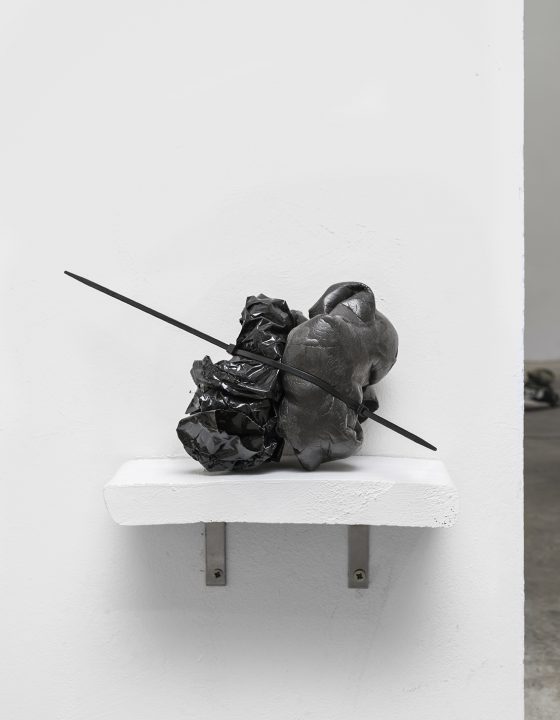
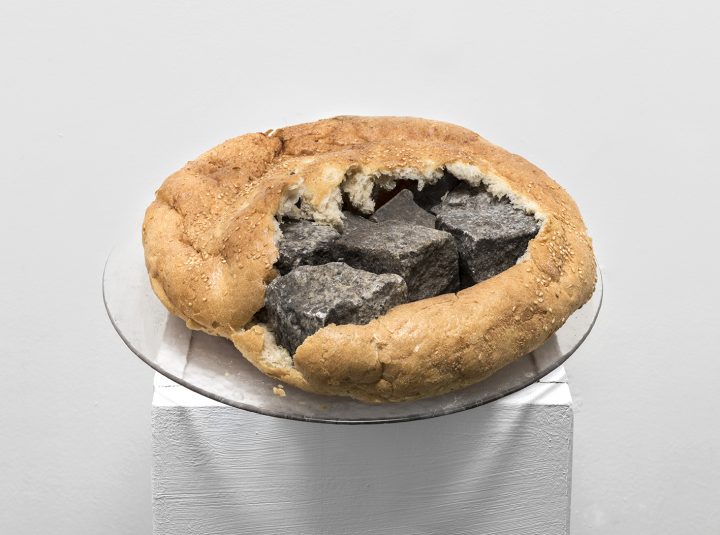
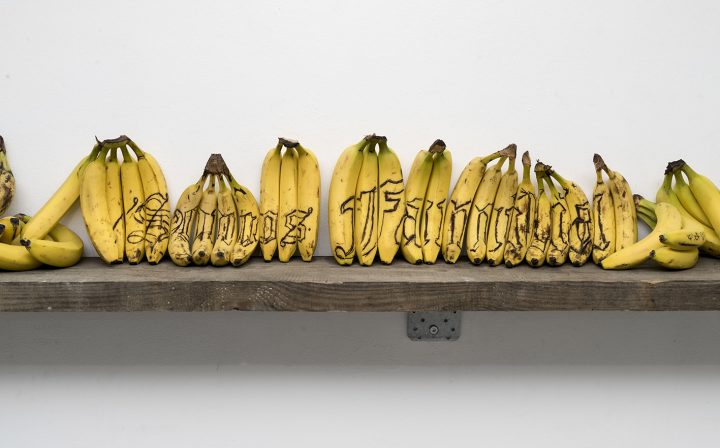

 Español
Español